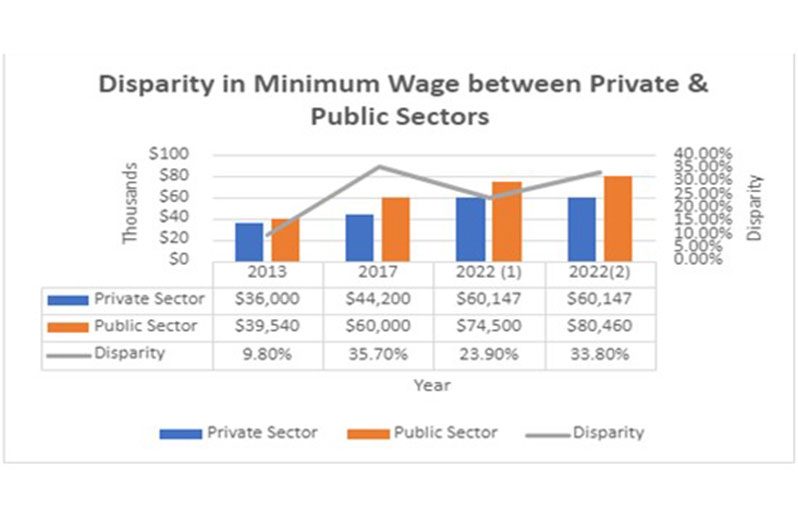By Dr. Tara Singh
ONE day before President Dr. Irfaan Ali, announced a wage increase of eight per cent across-the-board for all public sector employees, well-known trade unionist Dr. Nanda Gopaul and myself were engaged in a discussion on wage increase for the public sector.
We both agreed that given an inflation rate of 5.8 per cent (which is below most countries) that an eight-per-cent increase across-the-board is reasonable.
We premised this forecast also on the understanding that the government has made several interventions into the economy to soften that heavy punch of inflation, partly attributable to the supply chain problems and the Guyana flood.
Public Service workers’ increase would be payable with their December salary, and it would be retroactive to January 1, 2022.
The President listed some of those interventions, including the removal of 50 per cent excise tax on gasoline, and duty-free allowance on certain building materials. However, Guyanese might not necessarily appreciate the cumulative impact of interventions, as those occurred at separate times under different circumstances.
To provide a perspective on this, Financial Analyst Joel Bhagwandin conducted an analysis, and found that relief measures totalled over $200 billion (equivalent to $254,452 per capita or 33.5 per cent) of the country’s 2022 national budget.
The President also announced that work is being done to improve the salary scales of employees in the Public Sector with low pay (such as in the Armed Forces, nurses and doctors, teachers, frontline workers, etc.), and that an announcement on these adjustments would be made next week.
When asked if these measures have relevance to the 2016 “Commission of Inquiry into the Public Service of Guyana” (I.e., the role, functions, recruitment, training, remuneration, and conditions of service in the public service), the Minister of Labour Joseph Hamilton said “No”, and noted that the PPP/C Government has been in the process of evaluating the economic situation of workers and families continually, and making the necessary interventions for relief.
As Guyana continues to strive to narrow the income gap as part of the country’s economic development strategy, it has become apparent that, given the current increase in wage and the impending adjustments of the lower-level salary scales, the disparity between the minimum wage level of the private and public sectors will remain high.
The disparity in 2013 was 9.8 per cent; in 2017 it increased to 35.7 per cent; it dropped to 23.9 per cent (when the government increased the private sector minimum wage from $44,200 to $60,147); and it has increased again with the current increase in public sector wage (excluding the additional impending adjustments) to 33.8 per cent.
While the government cannot fix wage rates for the private sector, they could enact minimum wage legislation. They enacted one in July 2022, and another one could take place later, if the private sector minimum wage rate continues to lag behind the government’s minimum wage rate.
While the Minister of Labour is aware that the private sector is taking note of the various government interventions in the economy, he also says that the impact of the disparity at the minimum wage level is not as great as depicted by these figures, since 90 per cent of private sector workers earn more than the minimum wage (of $60,147), and only 10 per cent of the workers are at the minimum wage level.
Paul Cheong, Chair of Private Sector Commission (PSC) supports this ratio and added: “In most places, the starting salary is above the minimum wage. If you offer the minimum wage, you will not get staff.”
Cheong said that it is difficult to get a labourer for less than $4,000 a day. This works out to $100,000 (25 days x $4,000) per month. He envisages that more companies would need to move beyond the minimum wage to attract workers.
Minister Hamilton emphasised that while wage increase is important to keep pace with inflation, and is compatible with workers’ welfare, this (wage increase) must be considered part of a package that includes workplace safety, leave allowances, uniform grants, scholarship awards, and duty-free concessions among other things.
It is assumed that State agencies like Bank of Guyana, and Guyana Revenue Authority, would benefit from the wage increase. While this wage pay-out would increase the disposable incomes of households and individuals, it is unlikely to increase the inflation rate, as productivity has also increased across all economic sectors.












